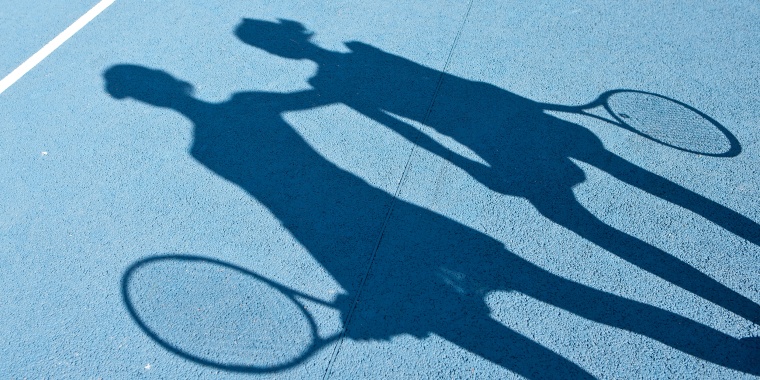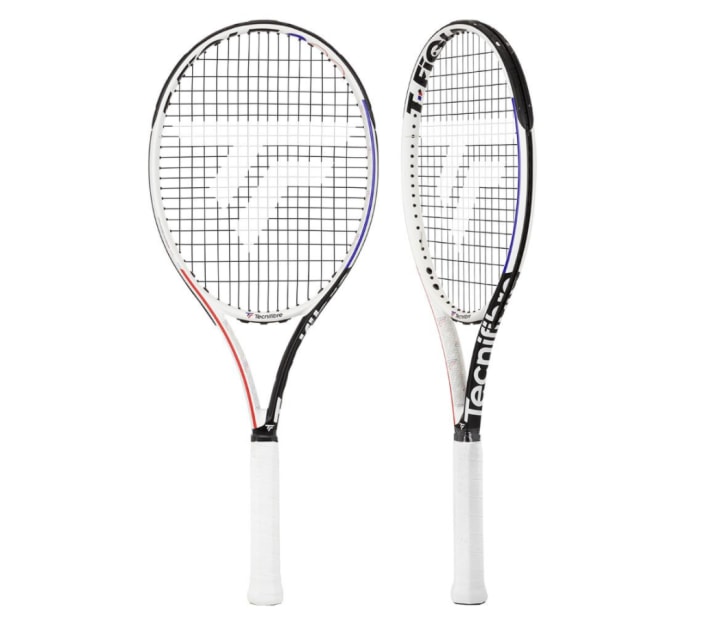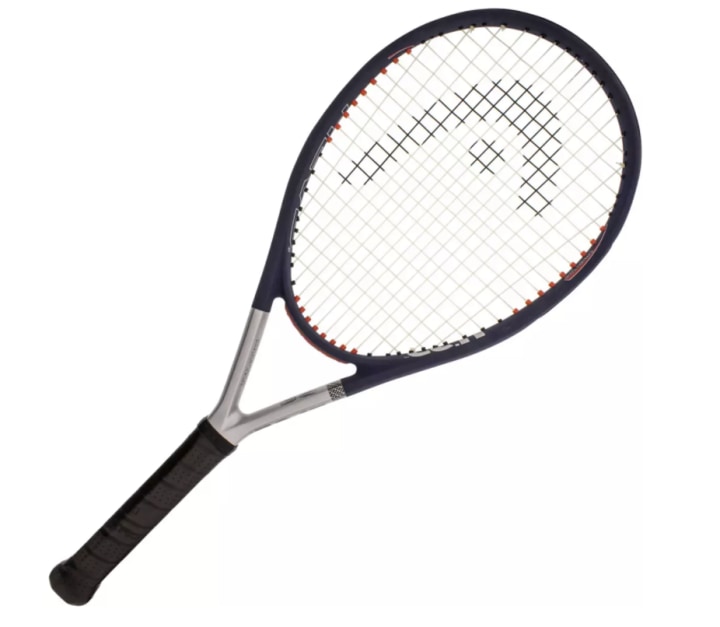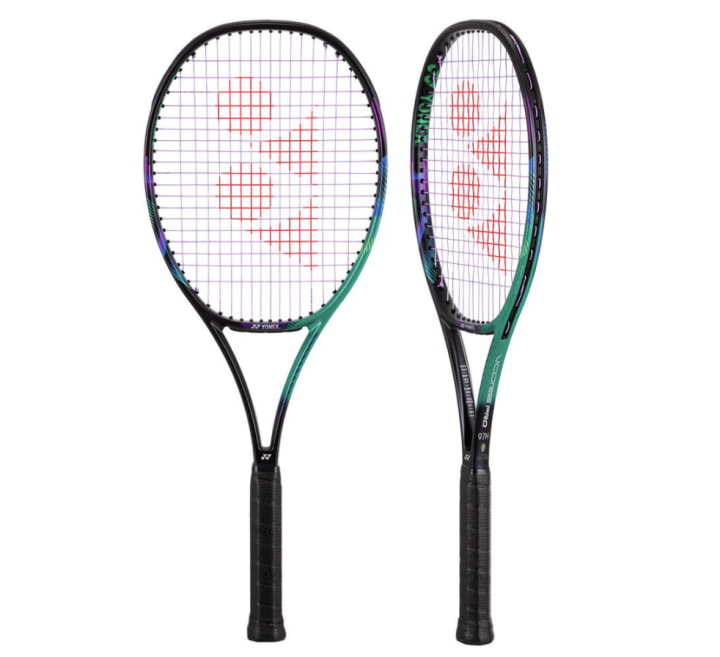I’ve been playing tennis since I was a middle schooler, and I never thought the racket mattered too much. I picked my first two junior rackets because I liked their yellow color and bought my third—that I used until this year—used from my coach, without trying any others. But actually, what racket you use matters a lot—there are so many specifications (head size, stiffness, weight, materials, technologies, etc.) that impact how a racket feels and how it will perform on the court.
Earlier this year, I tried out nearly a dozen rackets to replace my Babolat Pure Drive Roddick that I bought back in 2014. I liked it as a junior player for the extra power, but as I got older, I realized that the Pure Drive was, in a way, both too advanced and not advanced enough for my game. Its weight — 11.8 ounces with strings — was that of a higher-level player’s racket (any racket around or above 12 ounces should only be used by expert players). However, its absurdly high power level is more suited to a beginner, who may not have the technique to create power on their own. I had trouble generating racket-head speed, but when I was able to take a full swing at the ball, all of my shots launched out of play. I needed a lower-powered racket but also something slightly lighter (closer to 11 ounces with strings) so I could swing faster.
Tecnifibre T-Fight 300 RS Tennis Racquet
When I first tried the Tecnifibre T-Fight 300, it fit my needs to a T. At 11.2 ounces when strung, the weight was much more manageable for me, and the lower power level allowed me to take big rips at the ball, knowing my shots would stay in the court. The T-Fight’s racket-head (the part of the racket with strings that you hit the ball with) is 98 square inches, compared to my Pure Drive’s 100-square-inch-racket-head. With a smaller racket head, the T-Fight offered more control over my shot placement than my Pure Drive did — larger head sizes generally provide more power and less control, since the string bed “trampolines” more.
My hitting partner noticed a huge difference in my game — he said I swung noticeably faster when using the T-Fight, and my shots had significantly more pace, even though the racket itself was less powerful than my old Pure Drive.
As I keep progressing in tennis, and as my shots continue to improve, I feel that I will grow with the T-Fight rather than outgrow it: It forces me to practice increasingly better technique and generate my own power.
How to shop for a tennis racket
Other than weight and size, there are several racket specifications that can impact the feel dramatically:
Racquet stiffness
A stiff racket will typically be more powerful than a flexible racket, since it more efficiently transfers energy to the ball. However, stiffer rackets tend to cause more arm injuries than flexible ones, since it absorbs less impact from the ball.
Stiffness is measured on the “RA” scale, and most tennis rackets fall between 55 and 72 on this scale — 55 is very flexible and 72 is as stiff as a board. The T-Fight is a 66, which I would consider medium stiffness.
Beam Width
Beam Width can also impact a racket’s power. Thinner beams (closer to 20 millimeters or lower) generally offer less power compared to thick beams (closer to 25 millimeters or higher), since those rackets tend to be more flexible. The T-Fight’s beam is between 22.5 and 23 millimeters, so its beam has medium thickness.
Balance Point
Considering the balance point is important for several reasons. A racket with more weight in the handle (head-light) will feel much easier to swing than a racket with more weight in the head (head-heavy). Head-light rackets also tend to be less powerful than head-heavy ones. If you picture hitting a nail with a hammer in contrast to holding the head and hammering the nail with the handle, you’ll get the idea. The T-Fight, with strings, is 4 points head-light (each point is one-eighth of an inch away from the middle of the racket), so the balance point is slightly down the throat of the racket.
Specs matter, feel matters more
Ultimately though, all this talk of racket characteristics and specifications comes second to how it feels on the court and how it improves or complements your game. When you’re out on the court, it’s an extension of your body, and you have to be supremely comfortable with your racket to play with conviction. That’s what I felt with the T-Fight — the confidence to play my game without having to think about it. Try as many rackets as you can — and hopefully, you’ll find the perfect match as I did.
Buying a tennis racket is an incredibly personal choice, and it depends a lot on your level of tennis. After having tested and tried multiple rackets, I’ve got some in mind for anyone looking for an upgraded racket and across various needs.
Head Titanium Ti.S5 Comfort ZoneTennis Racquet
If you’re a beginner or an older player, you might prefer a racket with an oversized head (usually 105 square inches or higher) that provides more power. That player might also want a racket closer to the 10-ounce range or under, such as the Head Titanium Ti.S5 (with a 107-square-inch head size and sub-9-ounce strung weight), since it’s easier to swing.
Yonex Vcore Pro 97H 330 Tennis Racquet
Professional players tend to use rackets that are much heavier (closer to 12 ounces or even higher) and with small head sizes (often between 95 to 98 square inches, and generally no more than 100 square inches) for extra precision on their shots. If you’re a former college player or have played in professional tournaments before, something like the Yonex Vcore Pro 97H 330 (97-square-inch head size and strung weight of over 12 ounces) might be worth a try.
Catch up on Select's in-depth coverage of personal finance, tech and tools, wellness and more, and follow us on Facebook, Instagram and Twitter to stay up to date.





